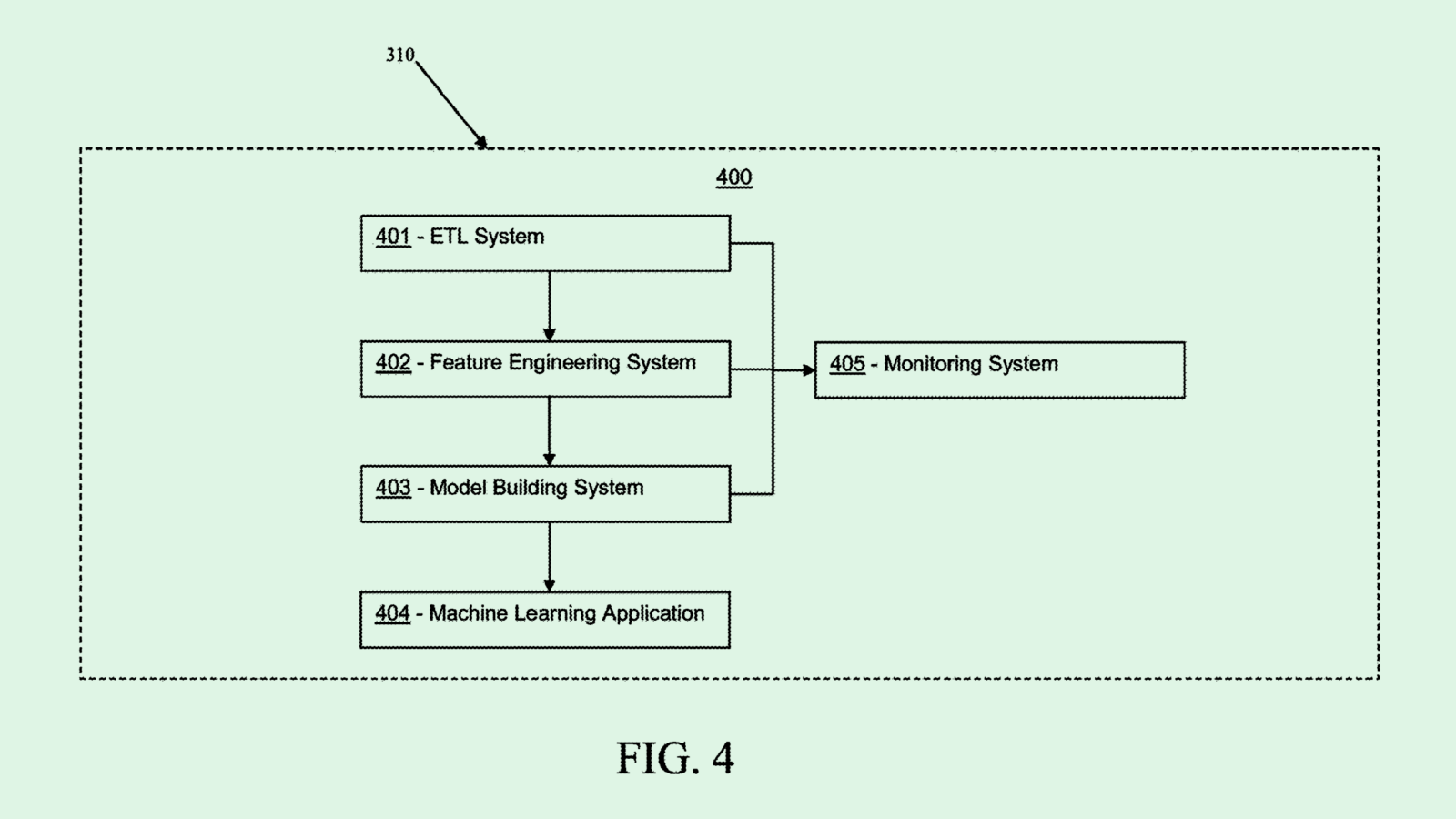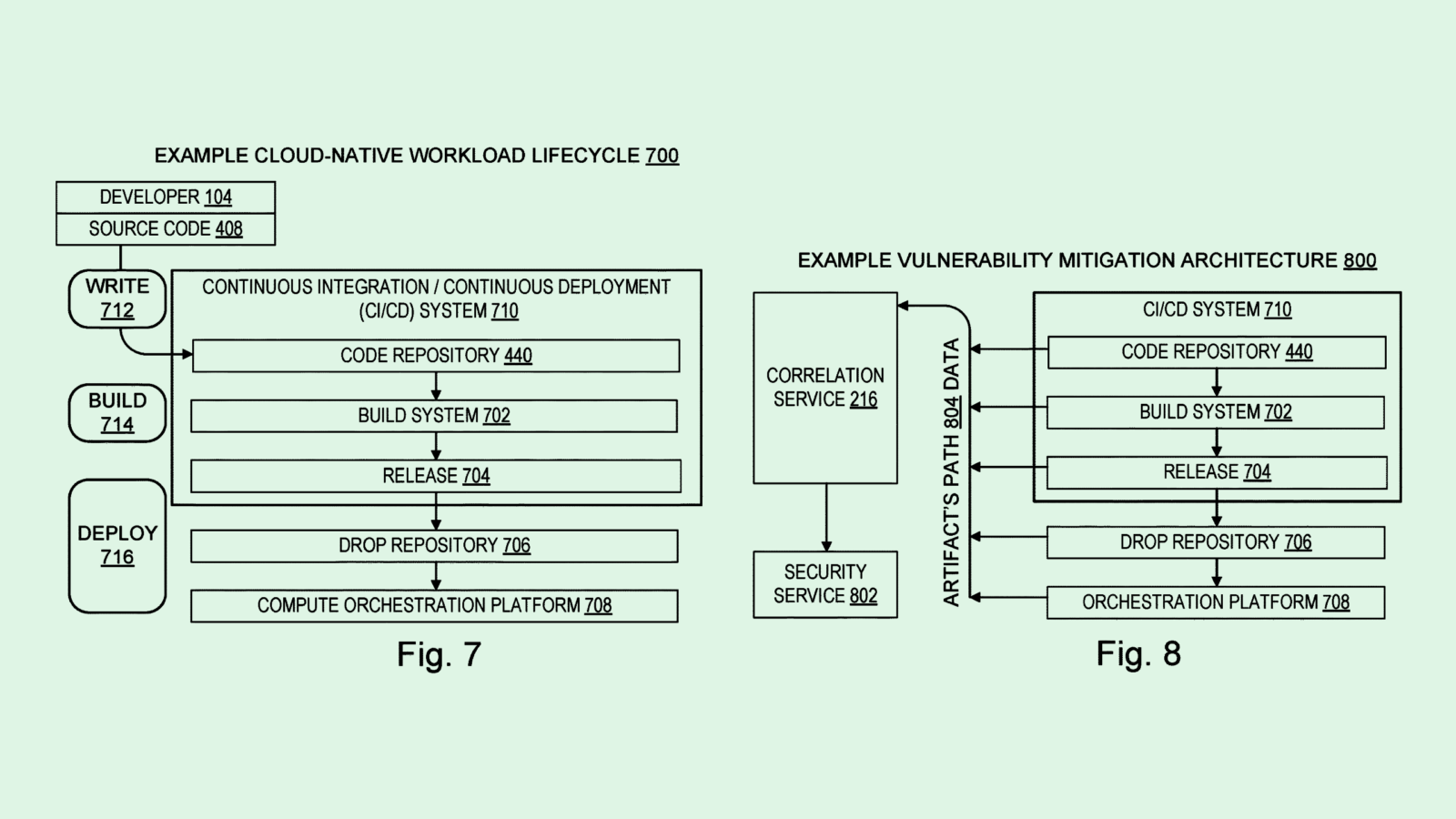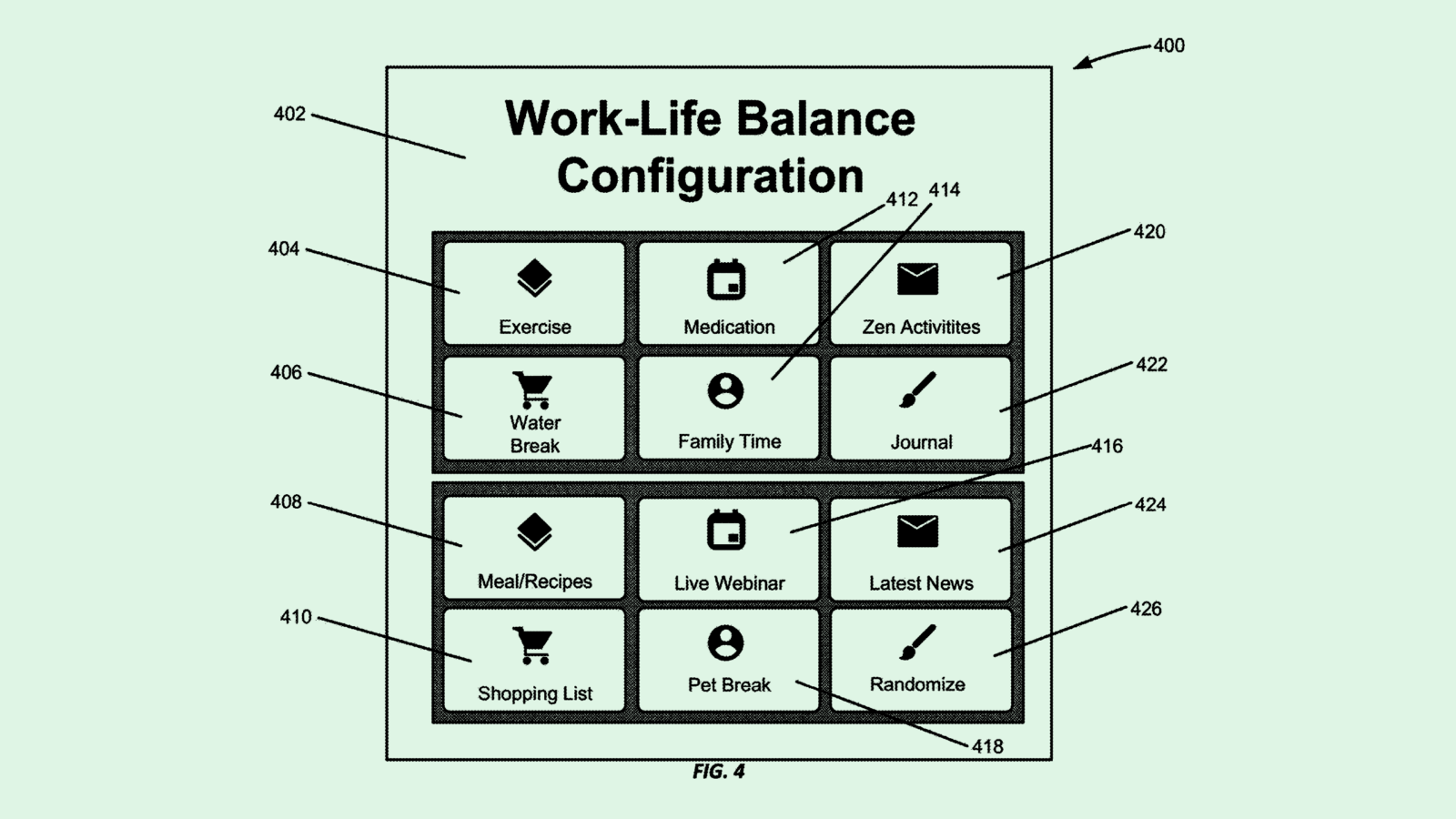Happy Monday and welcome to Patent Drop!
Today, a patent from Walmart for an in-house machine learning development framework highlights that the company’s strategy to compete with Amazon extends to its tech. Plus: Microsoft wants to trace software problems; and Zoom may schedule your wellness breaks.
Let’s have a look.
Walmart’s AI Push
Walmart is bringing AI to brick-and-mortar.
The retail giant filed a patent application for a “machine learning framework.” Walmart’s patent details the infrastructure and method for transferring data between machine learning models, aiming to make it easier to gather data and save on time and resources.
“While application of machine learning algorithms can be beneficial for an organization, the startup costs can be very high for a number of reasons,” Walmart said in the filing.
Walmart’s filing specifically details how to transfer “feature data” between two models. The term feature data has a lot of potential meanings in Walmart’s contexts, though when relating to customers, the filing noted that it could include things like interactions, demographics or “identity mapping data.”
The tech itself is relatively simple: Walmart’s system uses a “configuration file” to identify exactly which of this feature data, along with a subset of related historical transaction data, is relevant and necessary to train a machine learning algorithm.
That data is then put into an “output file,” which is “configured to be transferred between at least two machine learning models.” Because these output files can be created easily and used to train several different models, the framework allows Walmart more easily develop and deploy models for things like customer targeting or predictive analytics.

This isn’t the first time we’ve seen Walmart take an interest in AI. The company had previously sought patents for ways to predict user acquisition and churn, as well as a personalized recommendation engine based on user transaction history. It also tested in-store AI to advise employees on how to sell products and rolled out an AI-powered logistics offering earlier this year.
Though this may seem like a sign that the retail industry is seeking to keep up with tech’s AI frenzy, smaller brick-and-mortar institutions seemingly aren’t in a rush to innovate, said Thomas Randall, advisory director at Info-Tech Research Group.
“I think for smaller stores, there’s less fear of missing out. They’re just trying to maintain profit levels against the volatile supply chain as it is,” he said. “Larger institutions … they’re still trying to find the right use cases themselves. I think it’s fair to be a bit of a laggard.”
A likely factor in Walmart’s push, however, is Amazon. Walmart has long faced competition from the e-commerce giant, upgrading its third-party online marketplace, launching its own subscription offering to rival Prime, and even testing its own drone delivery service.
That competition extends to its tech strategy, too: In recent years, Walmart backed away from Big Tech cloud services offerings by building its own in-house server infrastructure to handle its processing. Creating its own machine learning development infrastructure as this patent details is likely part of that bid for independence, too, said Randall.
“Because of the competitive environment, (Walmart) is having to put forward a lot of their own technologies to … allow them to keep competing with other large ecommerce stores like Amazon – which, of course, has got its entire ecosystem of AI infrastructure, foundational models and partnerships,” said Randall.
Microsoft Retraces its Steps
Microsoft wants to keep its eyes peeled.
The tech firm is seeking to patent “security vulnerability lifecycle scope identification,” aiming to find faults in source code through different stages of development and deployment. The goal is to identify “the scope of performance flaws and security vulnerabilities” and avoid trying solutions that are “unnecessarily inefficient or incomplete.”
“No single security mechanism is able to detect every kind of cyberattack,” Microsoft said in the filing. “But sometimes combining and layering a sufficient number and variety of defenses and investigative tools will prevent an attack, deter an attacker, or at least help limit the scope of harm.”
Microsoft’s tech tracks these vulnerabilities through a collection of “software artifacts,” which can include anything from source code files to documentation to metadata that’s created in the process of software being developed. This system tracks the “artifact identifiers” of each of these pieces to find the paths that connect between them, essentially creating a digital trail to find where pitfalls may have occurred in the software development lifecycle.
If a pitfall is found, the system may automatically “resolve ambiguities” related to it, such as finding which developer is responsible, discovering whether that particular software has been deployed, or identifying related vulnerabilities.

Microsoft’s patent is akin to a security framework called SLSA, or Supply Chain Levels for Software Artifacts, which essentially aims to help trace where software breakdowns originate. Though similar tech exists, it’s hardly surprising that Microsoft would seek to patent it, said Ashley Manraj, chief technology officer at Pvotal Technologies, as it’s common for tech in patent applications to skew as broad as possible.
Microsoft can keep its own side of the street clean with tech like this. But in the face of a widespread outage, such as what occurred with Crowdstrike last Friday, there’s only so much the company can do, said Manraj. Because Crowdstrike is a third-party software vendor, he said, Microsoft likely has little visibility into the ins and outs of its software development and deployment pipeline.
Friday’s outage stems from a Microsoft configuration that allows security vendors like Crowdstrike to operate at the kernel level, giving them the highest level of access possible to an operating system’s resources. “If you get a crash, it crashes the machine completely,” said Manraj. “There’s no level of OS to protect you. Mistakes lead to the device crashing.”
Microsoft attempted to restrict this in 2006, but received pushback from security vendors and EU regulators. Now, the company may once again be calling to restrict vendors’ access to Windows’ kernel level, noting in a blog post last Thursday that the company must prioritize “end-to-end resilience.” Given the scale of the incident, Manraj said, the odds may be in their favor.
The crash may also lead to a change in the software market entirely, said Manraj, encouraging tech firms to utilize a broader diversity of vendors, rather than relying on one. That way, rather than 8.5 million devices going down, an outage may not be as severe, he said.
“I think that’s a lesson for the really big enterprises: Source with multiple vendors, and run different software stacks,” said Manraj. “Diversity is not always an enemy.”
Zoom Thinks Wellness
Zoom doesn’t want to be blamed for your burnout.
The company filed a patent application for “remote management of work-life balance scheduling.” Zoom’s tech uses machine learning to understand your schedule to determine when you need to take a break from meetings and go on a walk, grab a snack or simply back away from the screen.
“A user striving to maintain a healthy balance between work commitments and non-work commitments … may not find such balance promoted by a modern workday schedule that makes extensive use of the features of the video conferencing provider,” Zoom said.
When a user enables Zoom’s work-life balance scheduling tool, a user will be allowed to select certain actions they may want to be reminded of, as well as certain conditions that trigger these reminders, such as certain times of day or meeting lengths. Some of these actions may include things like taking a break, eating a meal or playing a game, as well as the option to “randomize” these reminders and let Zoom decide.
This system may use a machine learning model trained using “historical data relating the performance or non-performance of planned actions,” to determine what actions to suggest, Zoom said. “For example, the machine learning model may determine that a user prefers to exercise under certain conditions and prefers Zen activities under other conditions.”
These reminders may also be linked to third-party applications, such as games or a music player that’s installed on the user’s device.

Zoom’s bread and butter is its conferencing and telecommunications tech. But with its pandemic peak long faded, it may see AI-based productivity tools as its next frontier: In March, the company unveiled a suite of AI tools under the umbrella of Zoom Workplace, including a way to gather and synthesize notes, generative AI backgrounds, and a smart scheduling tool.
The company aims to shed its reputation for being known as simply a virtual meetings platform, Graeme Geddes, Zoom’s chief growth officer, told Fortune in late June. “We want to be known as an AI-first collaboration platform,” Geddes said.
But Zoom has quite a lot of competition in this arena, namely from Microsoft’s 365 Copilot and Google’s Workspace, Info-Tech Research Group’s Randall said. Though the work-from-home mandates of the pandemic have made Zoom a household name, tech firms like Microsoft and Google already have a massive head start in workplace tools. With their suites so ingrained into companies’ day-to-day operations, Randall said, “I don’t think we’ll see organizations making that switch.”
“(Zoom) seems to be stretching itself too thin and not focusing on its strengths, which are in communications, telephony, and conferencing,” said Randall.
Extra Drops
- Adobe wants to fix your grammar. The company filed a patent application for “correcting misspelled user queries of in-application searches.”
- Honda wants your car to be aware of its surroundings. The automaker is seeking to patent a system for “external environment recognition.”
- IBM is hanging on your every word. The company is seeking to patent “automated content highlighting based on spoken commands.”
What Else is New?
- Apple’s AI update will reportedly launch later than anticipated, according to Bloomberg. The company plans to roll out software updates in October.
- The U.S. Justice Department claimed that TikTok has collected user information on sensitive topics, making the app a national security threat.
- Chinese tech firm Xiaomi purchased a plot of land for $116 million to expand its EV production, aiming to keep up with demand.
Patent Drop is written by Nat Rubio-Licht. You can find them on Twitter @natrubio__.
Patent Drop is a publication of The Daily Upside. For any questions or comments, feel free to contact us at patentdrop@thedailyupside.com.
